Mini-computers: MK802, CuBox, Raspberry PI
The topic of microcomputers is definitely taking off. I already wrote about the Maximite assembly .
Recently, we managed to touch on some more mini cars, albeit in a slightly different class than Maximite, built on ARMs.
Immediately I apologize for the quality of the photos, but I didn’t manage to photograph the bright screen properly either on an iPhone or on a bar of soap.
')
I bought this one myself. Issue price - $ 70 + shipping. An official site with a gig of memory is already being sold on the official website . I only have 512MB.
My photos:


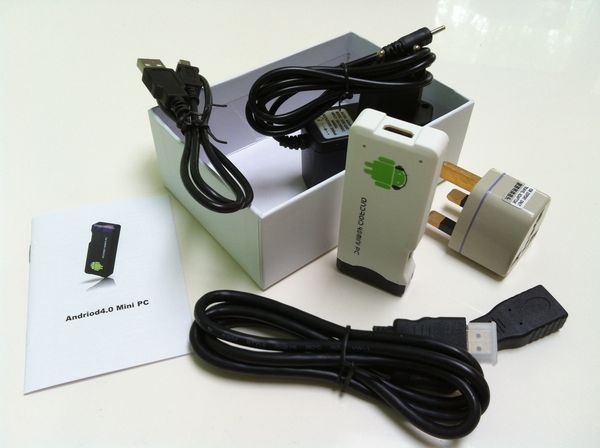
USB number one. It can also be powered through it, but they say that two amps are required, so it may just not work from the computer. I connected the keyboard through this connector.
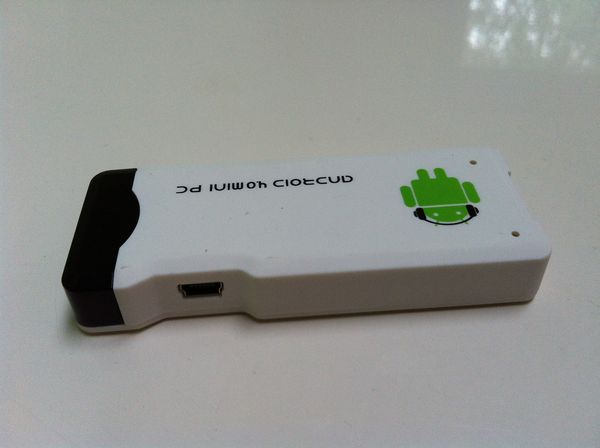
Mini HDMI. Through the adapter, it also turned out to be connected to a DVI monitor.
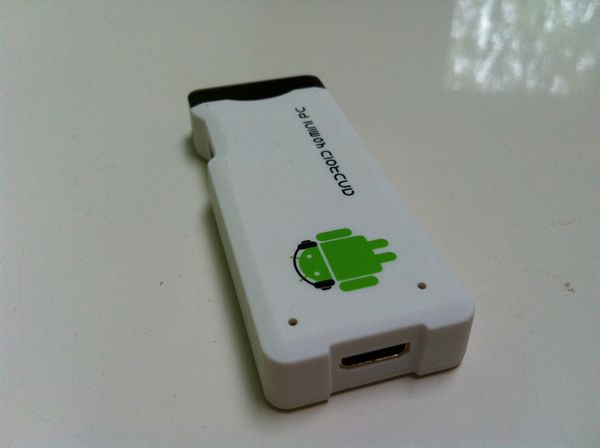
At the end still USB and external power.
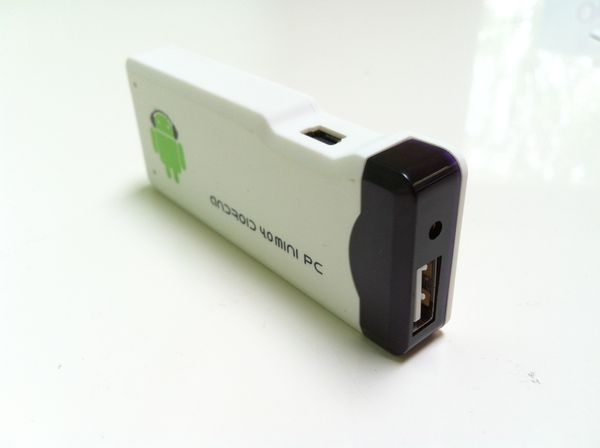
Micro SD connector. In size, the entire body is slightly larger than a regular design flash drive.

Connected to the TV. The Android is sewn, the download time to this screen saver is ~ 5 seconds.

Full load time ~ 25 seconds.
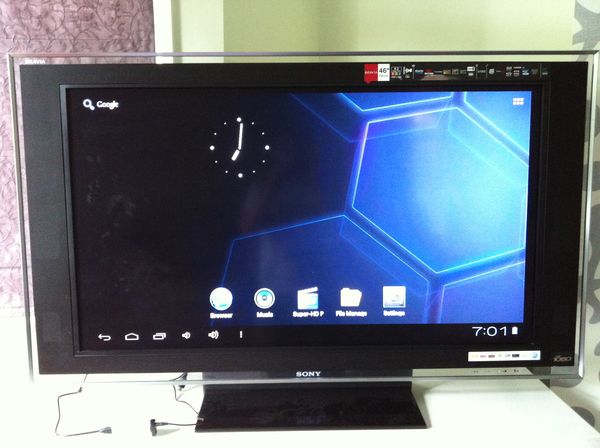
I connected the mouse, somehow entered the WiFi password on the virtual keyboard and immediately went to the correct site.
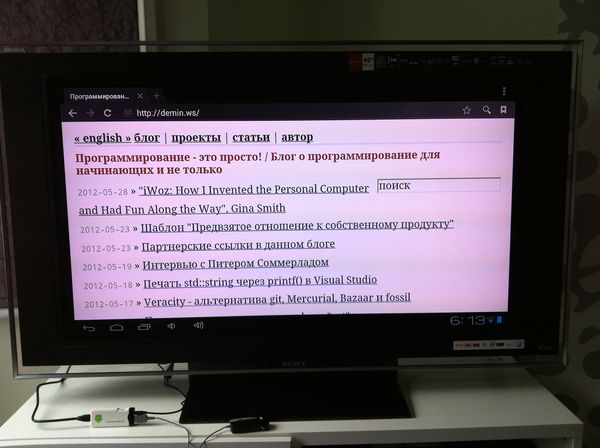
The desktop is intended to be used as a media center, so everything is so huge on the screen. A little fidgeting with fonts, got this.
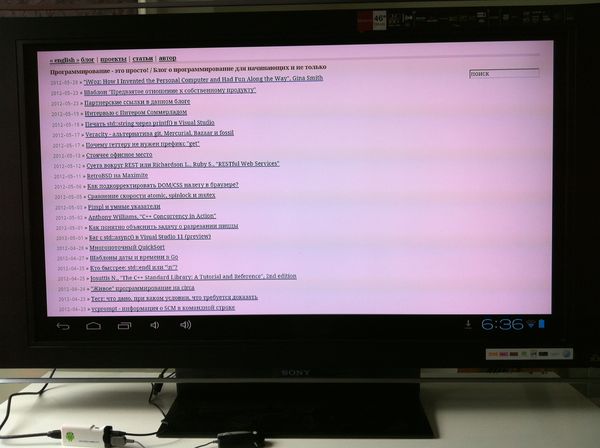
Now one more correct site.
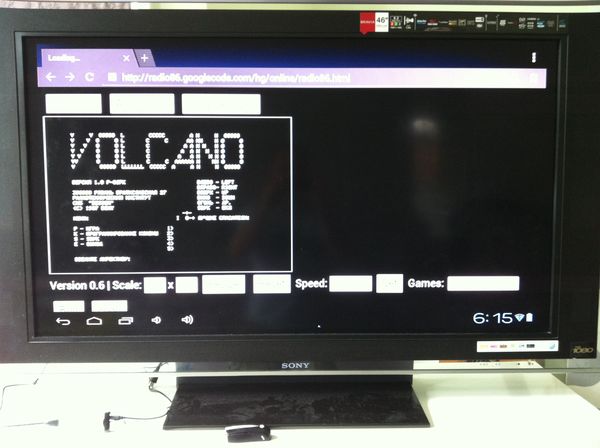
Internal storage options.
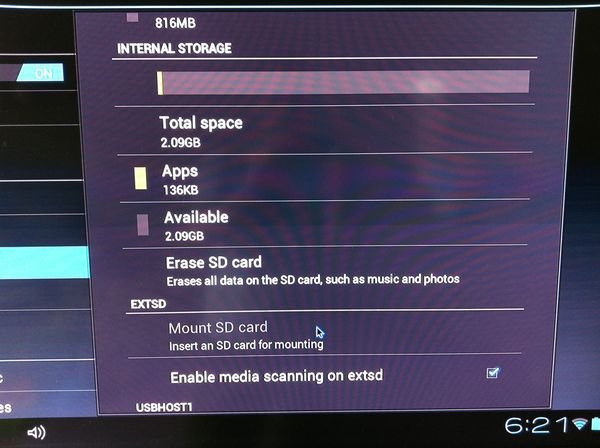
What an android.

Pre-installed applications.

Curtain is another correct site. Alas, JSLinux could not start. Probably the case in the browser.

The embedded Android works without a flash drive. If you prepare a flash drive with another Linux, then it will boot from it. And I tried the images of Ubuntu 12.04 and Lubuntu from the official site. Alas, everything really moves very irresponsibly. We need a normal distribution optimized for this platform.
You can see more pictures on the official forum . There is also a parsing procedure .
Conclusion: it is not entirely clear why such a device is needed. With Maximite, you can even play at the hardware level. And here: except to launch XBMC and use a machine of this kind as a media center.
Produced by SolidRun . This device was bought by a colleague who was tired of waiting for the Raspberry PI (I haven’t received my own either) and let me play.
Here the processor is slightly weaker, but more peripherals (although there is no WiFi), and they also promise 1080p video. This draws more on the role of the media center.
It is a cube, with a side about as a matchbox.

Power, network, HDMI, micro-SD, two USB, eSATA.

SPDIF, micro USB (console).
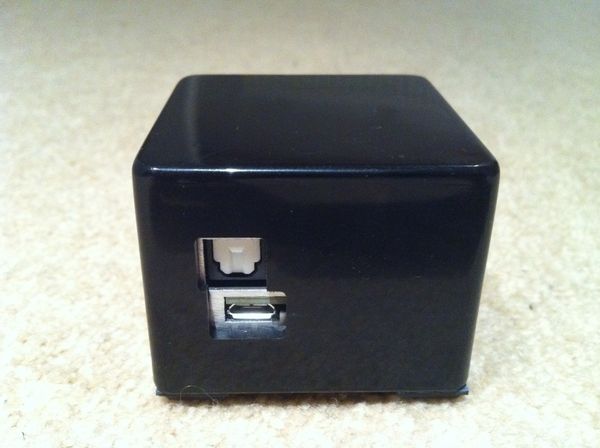
The device is somehow handicraft. The body, judging by the second picture, was sharpened with his hands, and not very straight. But in general - it works fine. On board Ubuntu 10.04.
This device was given to me by another colleague, still waiting for the cherished scarves. It is sold as is, without a power supply and flash drives for download. You need to prepare it yourself, although the information on the network is complete.
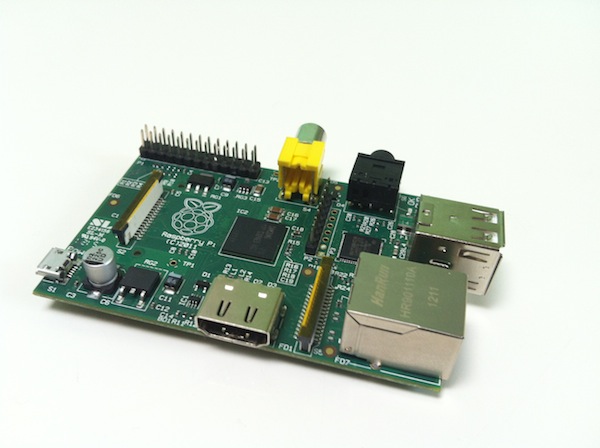
From interesting: at PI there are ports-pins of general purpose (GPIO) (on the photo in the upper left corner), to which you can theoretically connect any homemade products. In general, PI was conceived as an educational device, not a finite one.
Some kind of straight boom is observed with similar miniature computers. Grow like mushrooms. And ARM is great. One with them while an ambush - Chrome does not work for them for obvious reasons.
Recently, we managed to touch on some more mini cars, albeit in a slightly different class than Maximite, built on ARMs.
Immediately I apologize for the quality of the photos, but I didn’t manage to photograph the bright screen properly either on an iPhone or on a bar of soap.
')
MK802 (aka Mini Android 4.0)
I bought this one myself. Issue price - $ 70 + shipping. An official site with a gig of memory is already being sold on the official website . I only have 512MB.
My photos:



USB number one. It can also be powered through it, but they say that two amps are required, so it may just not work from the computer. I connected the keyboard through this connector.

Mini HDMI. Through the adapter, it also turned out to be connected to a DVI monitor.

At the end still USB and external power.

Micro SD connector. In size, the entire body is slightly larger than a regular design flash drive.

Connected to the TV. The Android is sewn, the download time to this screen saver is ~ 5 seconds.

Full load time ~ 25 seconds.

I connected the mouse, somehow entered the WiFi password on the virtual keyboard and immediately went to the correct site.

The desktop is intended to be used as a media center, so everything is so huge on the screen. A little fidgeting with fonts, got this.

Now one more correct site.

Internal storage options.

What an android.

Pre-installed applications.

Curtain is another correct site. Alas, JSLinux could not start. Probably the case in the browser.

The embedded Android works without a flash drive. If you prepare a flash drive with another Linux, then it will boot from it. And I tried the images of Ubuntu 12.04 and Lubuntu from the official site. Alas, everything really moves very irresponsibly. We need a normal distribution optimized for this platform.
You can see more pictures on the official forum . There is also a parsing procedure .
Conclusion: it is not entirely clear why such a device is needed. With Maximite, you can even play at the hardware level. And here: except to launch XBMC and use a machine of this kind as a media center.
Cubox
Produced by SolidRun . This device was bought by a colleague who was tired of waiting for the Raspberry PI (I haven’t received my own either) and let me play.
Here the processor is slightly weaker, but more peripherals (although there is no WiFi), and they also promise 1080p video. This draws more on the role of the media center.
It is a cube, with a side about as a matchbox.

Power, network, HDMI, micro-SD, two USB, eSATA.

SPDIF, micro USB (console).

The device is somehow handicraft. The body, judging by the second picture, was sharpened with his hands, and not very straight. But in general - it works fine. On board Ubuntu 10.04.
Raspberry pi
This device was given to me by another colleague, still waiting for the cherished scarves. It is sold as is, without a power supply and flash drives for download. You need to prepare it yourself, although the information on the network is complete.

From interesting: at PI there are ports-pins of general purpose (GPIO) (on the photo in the upper left corner), to which you can theoretically connect any homemade products. In general, PI was conceived as an educational device, not a finite one.
Instead of conclusion
Some kind of straight boom is observed with similar miniature computers. Grow like mushrooms. And ARM is great. One with them while an ambush - Chrome does not work for them for obvious reasons.
Source: https://habr.com/ru/post/146220/
All Articles